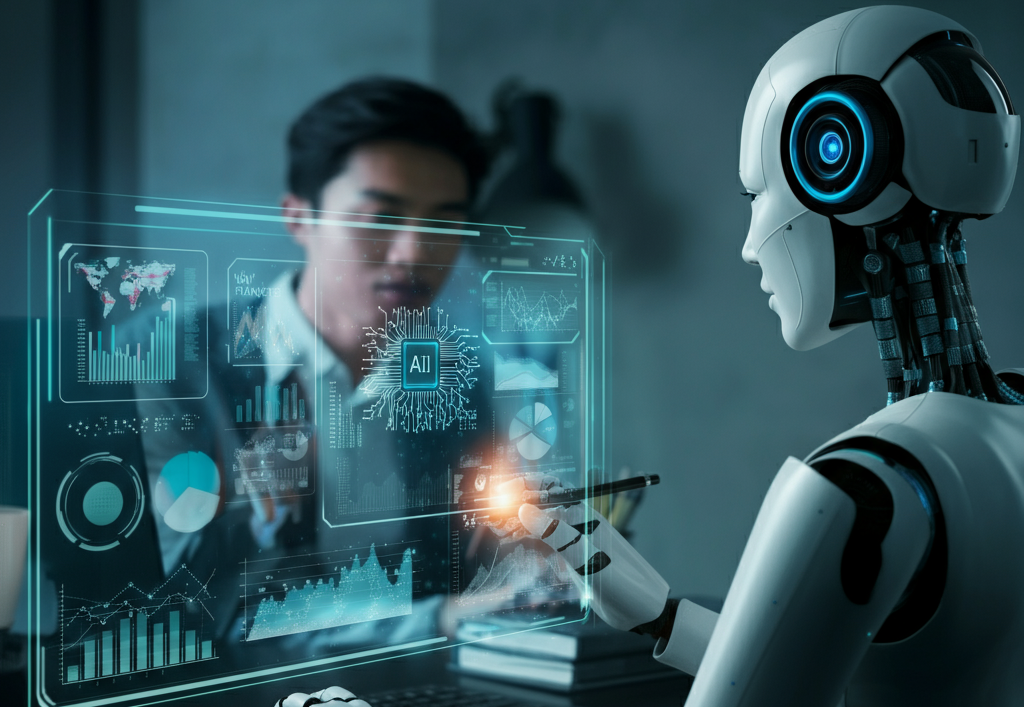After publishing my article on “The Rise of Hyperscale Datacenters,” I received several questions and comments about their impact on local communities. Many pointed out that these massive facilities often strain local power grids, causing challenges for nearby businesses and residents due to their high energy consumption.
However, some hyperscale datacenters are addressing this issue by building their own solar power plants to offset local energy use. Others are strategically located near nuclear power plants to leverage reliable, carbon-free energy.
Despite these efforts, concerns remain about the sustainability of these facilities, given their immense size and energy demands. The question of how to balance technological growth with environmental and community impact continues to be a critical discussion.
The Future is Fusion
I might get a few laughs for this, but I’m putting my faith in fusion energy. Unlike current nuclear energy, which relies on fission, fusion energy is a much cleaner alternative as it produces no nuclear waste. It also eliminates the need for massive facilities to generate power, making it more flexible and efficient. However, fusion energy is still far from being a practical reality. The closest we’ve come was a scientific experiment that managed to power a community for just two seconds. While promising, we still have a long way to go.
“Vision without action is merely a dream. Action without vision just passes the time. Vision with action can change the world.” – Joel A. Barker
Difference between Fusion and Fission
Fusion and fission are two different types of nuclear reactions that can generate energy. While both processes involve the splitting of atoms, they differ in their approach.
Fission
Fission is the process of splitting an atom into two or more nuclei, resulting in the release of a large amount of energy. This occurs naturally in radioactive materials such as uranium and plutonium but can also be artificially induced in a controlled environment for energy production.
The process of fission involves bombarding the nucleus with neutrons, causing it to become unstable and split into smaller fragments. These fragments then collide with other atoms, releasing more neutrons and creating a chain reaction. The heat produced by this reaction is harnessed to heat water and produce steam, which in turn powers turbines to generate electricity.
Fusion
Fusion is the process of combining two or more atomic nuclei to form a heavier nucleus. This process releases an enormous amount of energy and is what powers the sun and other stars in our universe.
Unlike fission, which involves splitting atoms, fusion involves merging them together. This process requires extremely high temperatures and pressure to overcome the strong repulsive force between positively charged nuclei. Currently, scientists are working on creating controlled fusion reactions for energy production.
Advantages of Nuclear Energy
Both fusion and fission are nuclear reactions that create energy. Nuclear energy has several advantages over other forms of energy:
- It does not produce greenhouse gases or contribute to air pollution like fossil fuels do.
- It produces a large amount of electricity from relatively small amounts of nuclear fuel.
- It is a reliable source of energy that can provide power 24/7 without interruption.
- It has a low cost of production compared to other sources such as solar or wind energy.
How will Fusion Reactors be Different from Fission Reactors?
Fusion reactors will generate energy through nuclear fusion, a process where two smaller atoms combine to form a larger one, releasing substantial energy in the process. Unlike fission reactors, which split atoms to produce energy, fusion is inherently safer and more efficient. It produces minimal radioactive waste and eliminates the risk of a runaway reaction. However, fusion technology is still in its infancy and has yet to be realized on a commercial scale.
The State of Research and Development
Fusion technology is a growing field of innovation, with significant global investments in projects like ITER (International Thermonuclear Experimental Reactor). ITER aims to prove the feasibility of fusion energy and, if successful, could pave the way for an abundant, clean energy source. Fusion reactors promise nearly limitless power generation with no greenhouse gas emissions and minimal long-lived radioactive waste.
Despite its promise, achieving sustainable fusion energy comes with major challenges. One key hurdle is creating and maintaining the extreme temperatures required for fusion without damaging the reactor materials. Researchers are exploring various approaches to overcome this, including:
- Magnetic Confinement: Using powerful magnetic fields to contain plasma at high temperatures.
- Inertial Confinement: Employing high-energy lasers to compress and heat hydrogen fuel.
With ongoing advancements in science and engineering, fusion energy holds the potential to revolutionize power generation, offering a sustainable and safe solution for the future.
One major area of innovation is in the design of nuclear reactors. Traditional nuclear reactors use pressurized water as a coolant, which can pose safety risks in the event of a malfunction or accident. New designs such as molten salt reactors and small modular reactors aim to use different coolants that can mitigate these risks.
Alternative for Datacenters
As massive data centers continue to grow, the demand for alternative energy sources like fusion becomes more urgent. Fusion power has the potential to revolutionize energy generation, offering a sustainable and virtually limitless solution to meet rising global needs. Companies like Tesla could one day leverage fusion technology to power spacecraft and drive groundbreaking innovations.
However, achieving this vision requires consistent and substantial investment in fusion research and development. Universities are already preparing for this future, equipping students with expertise in fusion and plasma technologies to lead the next wave of energy advancements. By committing to fusion, we can unlock a cleaner, more innovative future for generations to come.
When will the challenges of making fusion a reality be overcome?
It is difficult to predict when the challenges of fusion research will be successfully overcome. However, significant progress has been made in recent years and many experts believe that we are getting closer to achieving viable fusion energy.
As mentioned above, one major challenge in fusion research is creating a self-sustaining reaction, also known as ignition. This involves reaching temperatures of over 100 million degrees Celsius and confining the superheated plasma for a sustained period of time. Scientists around the world are working on different approaches to achieve this goal, such as using powerful magnetic fields or high-powered lasers.
Another challenge is finding materials that can withstand the extreme conditions inside a fusion reactor. The intense heat and radiation generated by a fusion reaction can damage or even melt most materials. Scientists are researching and testing different materials, such as advanced ceramics and superconductors, to find ones that can withstand the harsh environment of a fusion reactor.
Advantages of Fusion Energy
Fusion energy has several advantages over other forms of energy, which make it an attractive option for the future. Here are some key advantages of fusion energy:
- Abundant fuel source: One of the main advantages of fusion energy is that it uses hydrogen isotopes as fuel, which are abundant in seawater and widely available. This makes it a nearly limitless source of energy.
- Clean and safe: Unlike nuclear fission, which produces radioactive waste, fusion reactions do not produce any radioactive material. This makes fusion energy a much cleaner and safer option for the environment.
- High energy output: Fusion reactions produce significantly more energy than other forms of energy, such as fossil fuels or nuclear fission. In fact, one kilogram of fusion fuel can produce as much energy as 10 million kilograms of fossil fuel.
- No greenhouse gas emissions: Unlike fossil fuels which release carbon dioxide and contribute to climate change, fusion reactions do not emit any greenhouse gases. This makes fusion energy a crucial tool in reducing our carbon footprint and mitigating the effects of global warming.
- Minimal land use: Fusion power plants require relatively little land compared to other forms of renewable energy, such as solar and wind power. This is because fusion reactors are smaller in size and can be built underground, minimizing their impact on the environment.
- Safe and controllable: Unlike nuclear fission reactions, which can lead to catastrophic accidents if not properly managed, fusion reactions are inherently safer and more controllable. In the event of any malfunction or shutdown, the reaction stops immediately without causing any major damage. Additionally, fusion reactors produce very little radioactive waste compared to fission reactors.
- Versatile applications: The high temperatures and intense radiation produced by fusion reactions make it an ideal candidate for a variety of applications, such as space propulsion and medical isotope production. It can also be used to produce clean hydrogen fuel, which could greatly reduce our reliance on fossil fuels.
Conclusion
Innovation often emerges when we least expect it. A single breakthrough could revolutionize fusion power, transforming it into an immediate, game-changing energy source capable of powering next-generation hyperscale data centers. Such an advancement would create a profound ripple effect—accelerating AI development, driving quantum automation, and enabling devices to run on virtually limitless, sustainable energy.
While fusion power may still seem like a distant dream, progress in renewable energy and sustainable technologies is steadily paving the way. From solar panels to wind turbines, we’ve made significant strides in harnessing natural resources for clean energy production. For the architects of hyperscale data centers, the responsibility to minimize energy consumption while driving renewable energy research is not just a moral imperative—it’s a smart business move.





